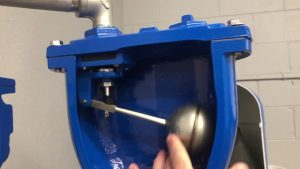Balancing valve types include static balance valve, dynamic flow balance valve, and self-operated differential pressure control valve, etc.
What is a Static Balancing Valve?
Static Balance Valve: It is also called Balancing Valve, Manual Balance Valve, Digital Lock Balance Valve, Double Position Regulating Valve, etc.
What does a Static Balancing Valve used for?
It changes the flow resistance through the valve by changing the clearance (opening) between the spool and the seat to achieve the purpose of regulating the flow rate. Its object of action is the resistance of the system, which can distribute the new water in proportion to the design calculation. Each branch increases or decreases in proportion at the same time, and still meets the flow demand of part of the current load.
What is a Pressure Independent Control valve?
Pressure Independent Control Valve: It is also called self-operated flow control valve, self-operated balance valve, constant flow valve, automatic balance valve, etc.
What does a Pressure Independent Control valve used for?
It automatically changes resistance coefficient according to the change of system working condition (pressure difference). In a certain range of pressure difference, the flow through can be effectively controlled to maintain a constant value, that is, when the pressure difference before and after the valve increases, the flow through the valve can be maintained by the action of automatic closing small. On the contrary, when the pressure difference decreases, the valve opens automatically and the flow rate remains constant.
What is a Differential Pressure Control Valve?
Self-operated differential pressure control valve: it is also known as dynamic differential pressure balance valve, differential pressure controller, stabilized variable synchronizer, differential pressure balance valve, etc.
What does a Differential Pressure Control Valve used for?
It uses differential pressure to adjust the opening of the valve, and uses the change of pressure drop of the valve core to compensate for the change of pipeline resistance, so as to keep the differential pressure basically unchanged when the working condition changes. Its principle is that it can effectively control the constant pressure difference of the controlled system within a certain flow range. That is to say, when the pressure difference of the system increases, it can ensure that the pressure difference of the controlled system increases through the automatic closing of the valve. On the contrary, when the pressure difference decreases, the valve opens automatically and the pressure difference remains constant.












